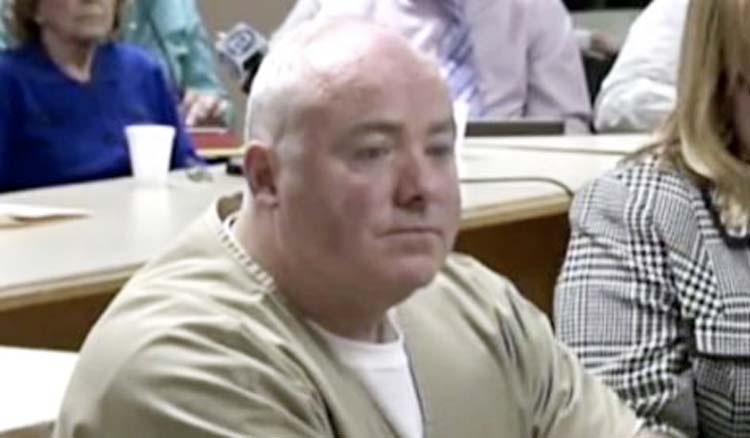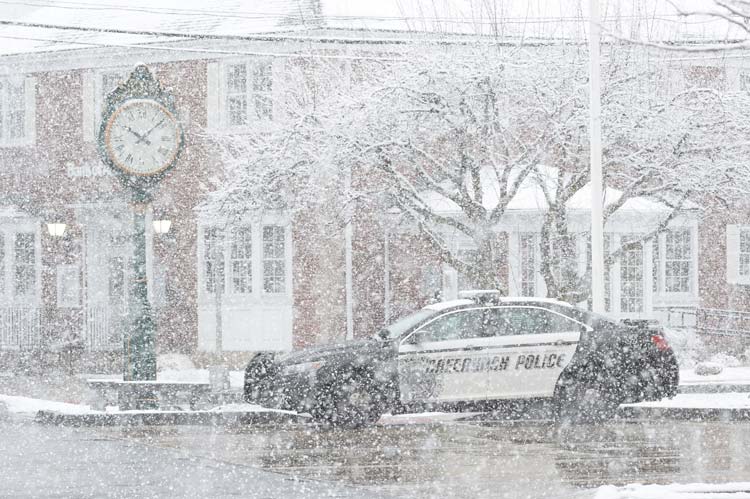
By Timothy Dumas
Contributing Editor

On Dec. 30, a fiercely divided state Supreme Court overturned the decision that freed Michael Skakel from prison three years ago. This means that Skakel will soon be back behind bars, since his conviction for the 1975 murder of Martha Moxley has been reinstated. Right?
Probably. But procedural issues surrounding the Supreme Court’s 4-3 decision have proved so knotty that nobody seems quite sure when, or even if, that will happen. Hubert Santos, Skakel’s attorney, has filed a motion asking for “reconsideration or re-argument” of the decision; if the motion is granted, Skakel could remain free until the court reconsiders the issues, and potentially reaches a different conclusion.
But why would it do that? In all probability, it wouldn’t. Reconsideration requests are “almost never” granted in the first place, said Susann Gill, a recently retired prosecutor who was part of the team that convicted Skakel and handled the lion’s share of the appellate duties. What’s more, Santos does not appear to have offered a compelling reason for reconsideration.
The reason he does advance centers on an alibi witness, Denis Ossorio, who did not turn up until 2012, a decade after Skakel’s conviction. Ossorio intriguingly puts Skakel in backcountry Greenwich at the plausible time of the murder, 10 p.m. But we can’t be certain that Ossorio’s memory is accurate. At trial, neither the Skakel brothers nor their cousin James Dowdle put Ossorio among them as they watched “Monty Python’s Flying Circus” that night—a shame for Michael, because Ossorio would have been the sole non-family alibi witness.
Was Mickey Sherman, Skakel’s trial attorney, remiss in not having found Ossorio before the trial? The justices were divided on that question, but nothing new has been presented since Dec. 30 that would seem to warrant a new look.
There is, however, a complication to be worked out. One of the justices who voted against Skakel, Peter T. Zarella, stepped down from the bench on Dec. 30, the same day the decision came out. Typically, justices remain involved in cases they’ve worked on even after retiring. But Santos is arguing that Zarella, who is entering private practice, should now be excluded from the process, and argues further that the motion for reconsideration should be decided only when Zarella’s replacement is named. A newly composed panel would give Skakel a shot at swinging the vote to 4-3 in his favor.
(At the moment, with Zarella’s retirement, the Supreme Court consists of seven justices, but for the purposes of this case, only six, since Chief Justice Chase T. Rogers has recused herself. In the event that Zarella did not take part in a reconsideration, the justices would split evenly, 3-3, if they keep their present stances, and the tie would go to the prosecution—thus the importance to Santos of having a new justice to try to win over.)
On Tuesday, James A. Killan, a senior assistant state’s attorney, filed his rebuttal to Santos’ arguments. In it, he accuses Santos of trying “to engineer the composition of the panel that could overturn the appellate judgment against [Skakel].” Killan writes also that there is no legal basis for barring Zarella from seeing the matter through.
Assuming that Santos’ motion for reconsideration goes nowhere, Skakel could be back in prison within a month, Susann Gill believes. If, however, Santos appeals to the U.S. Supreme Court—as he would likely do—Skakel could remain free for the six or eight months it would take for the Court to respond, Gill said, since he has behaved well during his three years of freedom. (Still, it’s within the state Supreme Court’s power to order Skakel back to prison even if Santos does appeal to the federal level.)
Bottom line, it appears that Skakel’s routes to freedom have all but petered out.
Divided opinion
Both the Supreme Court’s decision to reinstate Skakel’s murder conviction and the appellate court’s 2013 decision to set Skakel free were enormous surprises. “I’m so conditioned to think that almost anything can happen,” Dorthy Moxley, Martha’s mother, told the Sentinel. She added of the Supreme Court decision, “I won’t believe it until he’s back in jail. I firmly believe that Michael was the one who swung the club that killed Martha.”
The Supreme Court’s written opinions expose tension between the justices. Justice Richard Palmer, in his dissent, wrote with a dash of acid, “…I wish to underscore one aspect of the majority opinion, pertaining to the alibi issue, that is so blatantly one-sided as to call into question the basic fairness and objectivity of the majority’s analysis and conclusion.” Zarella and the majority justices countered that the dissenters “misstat[e] the majority’s views. We will not rely on similar tactics.”
The wrangling stems from Judge Thomas Bishop’s ruling in 2013 that Skakel’s conviction should be thrown out because Mickey Sherman put on an incompetent defense. Legal pundits were stunned. They regarded Sherman as a gifted trial attorney—creative, quick on his feet, a little unconventional—with a history of winning hard cases.
Bishop’s scathing 135-page decision took particular aim at Sherman’s decision to focus on Ken Littleton, the Skakels’ live-in tutor in 1975, as the likely killer and not Michael’s older brother Tommy—but the high court held that Sherman’s strategy was entirely reasonable. Bishop also criticized Sherman’s failure to turn up Ossorio and another man who would have contradicted trial testimony that Michael once said, “I’m going to get away with murder. I’m a Kennedy.”
But Bishop seemed to have a broader goal in mind: setting free a man he believed had been wrongly convicted. Martha Moxley, 15 years old, was savagely killed with a Skakel family six-iron on Oct. 30, 1975, outside her home in Belle Haven. Michael Skakel, also 15, was arrested nearly 25 years after the fact, in January of 2000, and found guilty in June of 2002.
Bishop wrote bluntly about his apparent suspicion of Tommy. Evidence of his “direct involvement with the crime was powerful,” he observed. “Sherman’s failure to point an accusatory finger at [him] was and is inexplicable.” Sherman maintains that the evidence against Littleton was stronger; at the same time, he has noted, some of the most powerful evidence against Tommy was inadmissible, since it derived from private investigators the Skakels themselves had hired.
The Supreme Court’s decision leaves Sherman in an odd spot. He feels vindicated by its finding that Skakel received an adequate defense, but laments that Skakel once again appears to be prison-bound.




